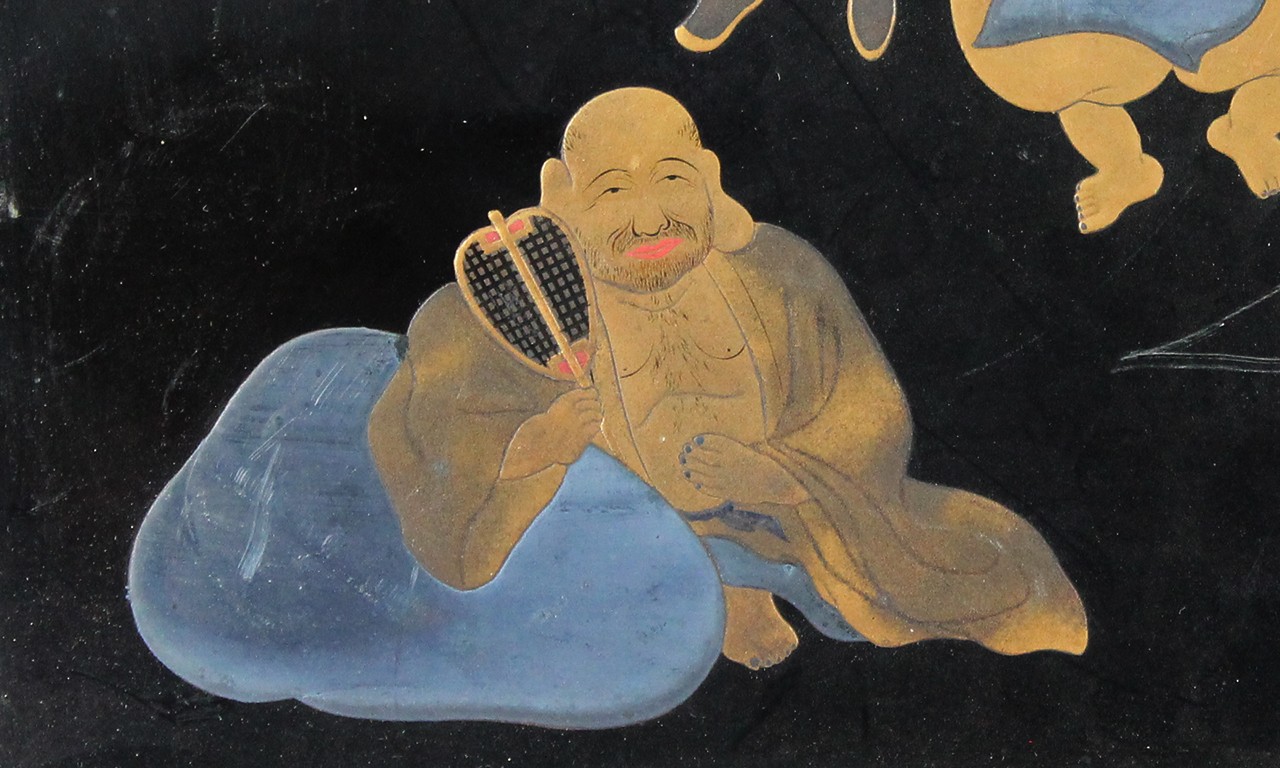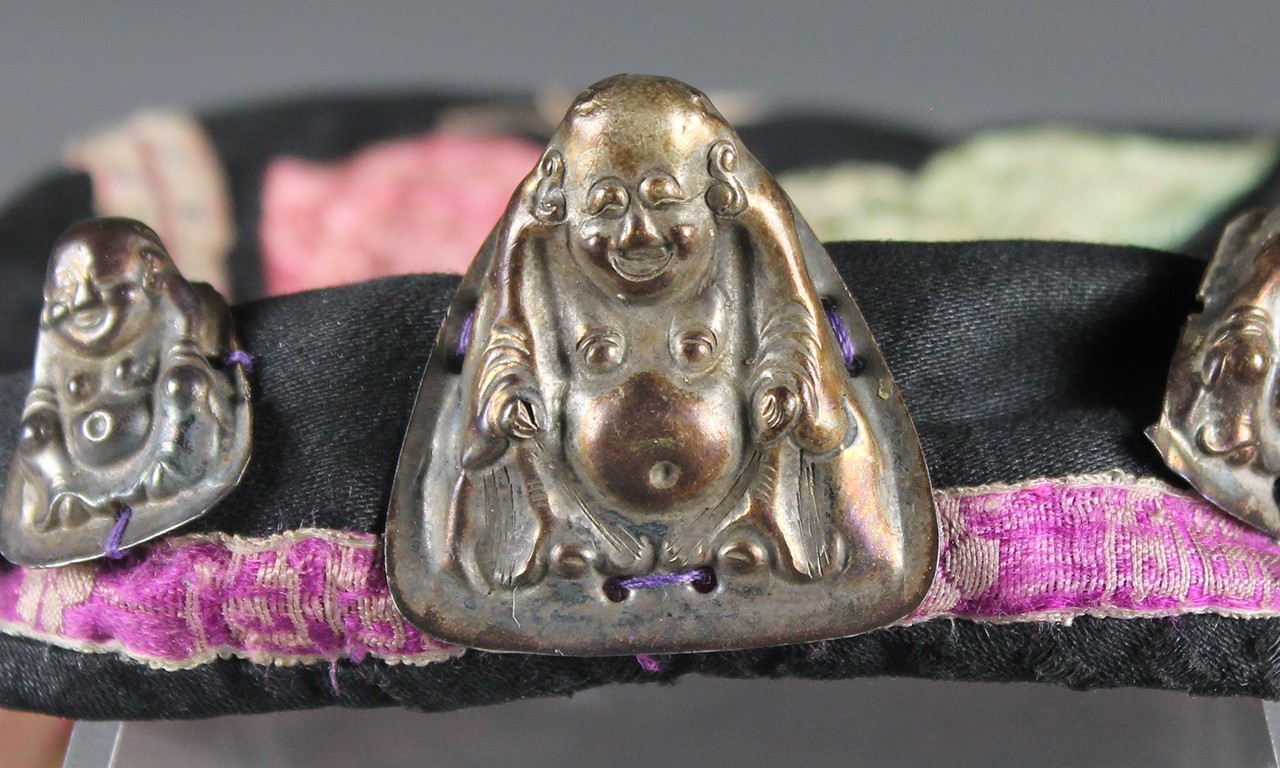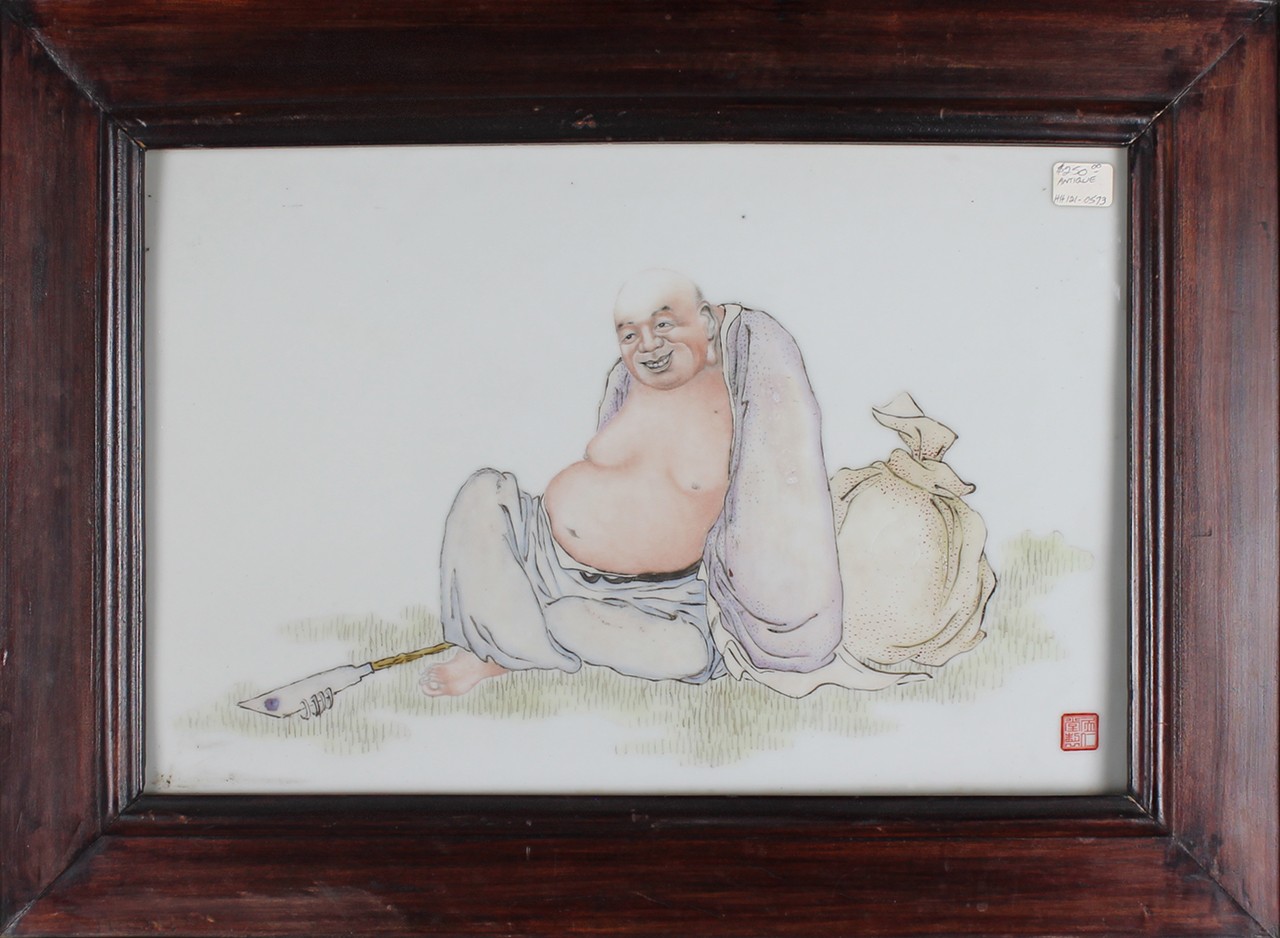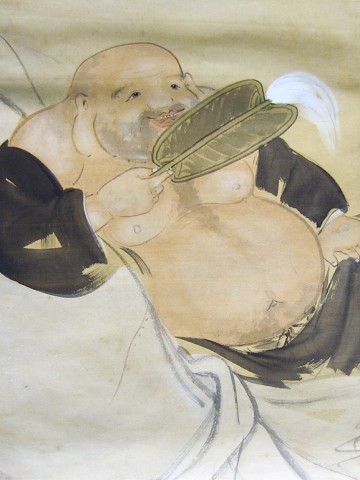 |
Hotei Relaxing in a Field, mid to late 20th Century
Maker Unknown; China
Painting on porcelain tile
96.52.34
Gift of Mr. and Mrs. Herb Hansen |
Lots of Loves
Love is a fairly complex force that can (often insufficiently) be defined as an intense feeling of affection towards family; friends; a significant other; a childhood pet gerbil named Scruffy, rest in peace little guy; or any Instagram-worthy foods like say… pizza fries. Love is the antithesis of hate; it serves as an optimal salve for any problems that cannot solely be remedied by money; according to the philosophers Lennon and McCartney, it can’t be bought. It’s complex. You may at this point be wondering why the banner image for a Valentine’s day post ostensibly about love features a round, bald man with an allergy to a covered stomach. The figure is Budai, a human embodiment of happiness and compassion whose claim to spiritual fame stems mostly from minor miracles such as predicting the weather. Despite his humble aesthetic, he is among the most venerated Buddhist figures. This post looks at how Budai’s many names affected his character, the symbolism in his depictions and how Budai is as much an avatar of love as he is compassion.
 |
Detail of Tray, 20th Century
Maker Unknown; Japan
Gilt and lacquer; 12 x 18 in.
32982
Stella May Preble Nau Estate |
Man of Many Names
The name Budai translates to cloth bag, a moniker that the travelling monk Qici (Ch'i-t'zu) earned by coming into towns with naught but a sack slung over his shoulder. But Budai and Qici are just a sampling of the figure’s many names, each of which hints at another aspect of his complex posthumous story. As early as the 6th Century, Chinese Buddhism was consistently spread to Japan through trade and proselytization. An indeterminant amount of time after his death, stories of the potbellied wanderer were brought to Japan where he was readily accepted under the Japanese name Hotei. Just as it was in China, his likeness in Japanese sumi-e paintings and satsuma was a common sight. The majority of the Bowers Museum’s objects featuring Budai are Japanese and include a tray, multiple scroll paintings, and a painted tile.
|
|
Two Scroll Paintings Featuring Hotei, 1885-1895
Unknown Artists; Japan
Ink on paper, silk, cloth and wood
96.24.14,.17
Gift of Ms. Anne Detwyler Knowles |
Poem to Go
When looking at Budai, perhaps the first association that comes to mind is to the Buddha. There is good cause for this. The final words spoken by Budai hinted at a link between himself and the Buddha of the future, Maitreya, who would appear at a time when most had forgotten about dharma:
Maitreya, true Maitreya / Reborn innumerable times / From time to time manifested among men / The men of the age do not recognize him.
Budai Between his teachings and this final note, some schools of Buddhism accepted Budai as an incarnation of Buddha rather than just as a Bodhisattva. Because of this, Budai earned a few more nicknames that are used in both China and Japan: “Laughing Buddha” or “Fat Buddha.” Of course, every writer to tackle the subject since has also taken free license in describing Budai. Perhaps the most poetic of these is as a “roly-poly Chinese beggar-monk.”
 |
Detail of Hat with Budai Design, early 20th Century
Maker Unknown; China
Silk, cotton and metal; 2 1/2 x 5 1/2 in.
2007.10.1
Gift of Anne and Long Shung Shih |
Belly Rubs
Over the centuries the figure became more and more often accepted as a symbol of both happiness and—perhaps ironically for a figure that gave away most everything he received—abundance. The latter is due to him teaching that it is those that give that are most likely to receive in times of need. As the figure rose in folk popularity, he began to appear in shops and stores as a sign of good fortune for that same reason. Though rubbing his belly did not traditionally have any religious significance, it has come to be a good luck charm in both China and Japan. The Budai design on this Miao Chinese hat is noticeably burnished on it's belly.
 |
Alt. view of 96.52.34
Gift of Mr. and Mrs. Herb Hansen |
Buddha-ha
An analysis of different depictions of Budai reveals even more about his character. Whether historically accurate or a result of the mythos that evolved around Qici following his death, he is always depicted as a very round, odd-looking individual with large earlobes—a symbol of spirituality—and sometimes with a wish-granting fan. Stories about the figure seem to indicate that he did not at all mind being unsightly though. Among Budai’s greatest pleasures was delighting children. He earned his reputation for doing this in several ways, one was to keep a stash of candies to give to children in his bag; the other was (intentionally or unintentionally) to look funny enough that children would openly laugh at him. And herein lies the main rationale for a post on love. Budai’s philosophy was not one of meeting insult with hurt or even to turn the other cheek. He met harshness head on with a smile on his face, compassion in his heart, and love for humankind. His love changed the very world around him so that he was never the butt of cruelty, but a beacon for love and happiness in an all-too-often angry world. However you spend Valentine’s Day, perhaps Budai’s universal compassion is another brand of love to celebrate.
Text and images may be under copyright. Please contact Collection Department for permission to use. References are available on request. Information subject to change upon further research.







Comments